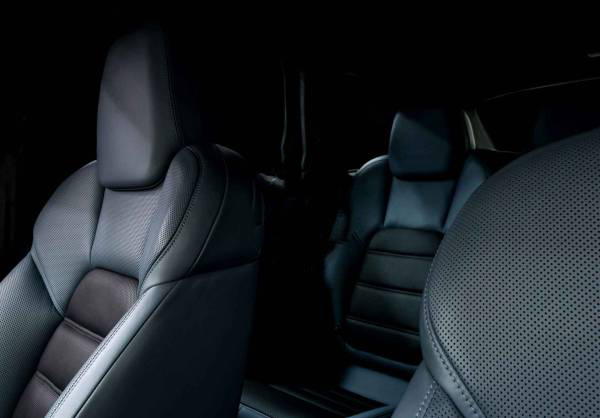What is PDR? Paintless Dent Repair vs. Traditional Repair

PDR vs. Traditional Repair: Which Is Best for Your Car?
Dents in cars happen. Imagine walking out of a grocery store and seeing a new ding in their car door. Or maybe a hail storm came through and left the hood of the car really damaged. Either way the same question always comes to mind: how can I repair this dent without overspending or causing more damage to the value of my car?
This is where people struggle. Do you use Paintless Dent Repair (PDR), the new school method for dent removal, or do you take it to a traditional body shop to be fixed? They both have their use, but using the wrong repair technique will end up costing you money or result in a repair that makes your car look even worse.
The goal of this article is to cut through the confusion. I won’t bombard you with technical jargon but rather I will show you how each technique works, when each method can be used, and most importantly what is important in the decision making process. To show this in action, I will also tell a short story about a person who was in this exact position. By the end of this article, you will know exactly which route you should take to repair your car.

What is Paintless Dent Repair (PDR)?
PDR is the “gentle fix.” A pro will use special tools to massage and push the dented metal back into shape. The big detail here: no paint is touched.
So, that means no sanding, no fillers, and no painting. Your car maintains the factory finish. If resale value is important to you (or you just want the car to look as stock as possible) that’s a big plus.
PDR is great for:
Small to medium sized dents
Hail damage
Door dings without paint cracks
However, PDR can’t fix dents that are too deep or have chipped paint. It also can’t reach some dents from behind. This is where traditional dent repair comes in.
What is Traditional Dent Repair?
Traditional repair is the “body shop fix.” It includes sanding, filler, primer, and paint on the panel. The shop may also blend surrounding panels to make the paint match across the car.
Traditional repair is used when the damage is severe. Cracked paint, deep dents, or dents that can’t be accessed from behind. It’s more labor-intensive and the car’s original finish is lost. That can have a long-term impact on resale value if the new paint doesn’t match.
However, it’s the only solution for some damage, where PDR can’t do the job.
How This Plays Out in Real Life
Meet Mike. He owns a 2019 Ford F-150. Last week a hailstorm smashed up his truck. When he went out to check the damage, his hood and roof were full of dozens of small dents. Thinking the insurance check would have to cover a hefty bill, Mike stopped by the local body shop to ask for an estimate.
He was presented with two options. If he went the traditional route, sanding, filling, and repainting the necessary panels, it would cost him someplace between $2,500 and $5,000. That depended on how many panels required repainting and blending. He’d also be without his truck for close to two weeks.
The second option was Paintless Dent Repair (PDR). Since the hail hadn’t cracked the paint, one of their technicians could massage the dents out using PDR tools. That work would cost $1,000 to $2,500 and be done in just a few days.
Mike decided to go with PDR. When his truck returned from the shop, it looked like it just rolled off the showroom floor. The factory paint was intact, and there was not a trace of the hail damage. Had the hail chipped the paint, though, he wouldn’t have been able to choose PDR. Traditional repair would have been the only option.
Differences Between PDR and Traditional Repair
COST
PDR: $50–$200 per small dent. Hail damage repairs can go up to $1,000–$2,500.
Traditional Repair: $300–$700 per dent (depending on severity). Can go as high as $2,000-$5,000+ for serious damage.
TIME
PDR: Hours to a few days.
Traditional Repair: Days to weeks (allowing time for drying, painting, etc).
PAINT & RESALE VALUE
PDR: Keeps the original factory paint intact, which can be better for resale value.
Traditional Repair: Involves repainting, which may lower resale value if the finish doesn’t match the rest of the car.
ENVIRONMENTAL IMPACT
PDR: Doesn’t use any chemicals, paint, or create waste.
Traditional Repair: Uses paints, solvents, and filler which can be less eco-friendly.
DURABILITY
PDR: Leaves the panel as close to factory condition as possible.
Traditional Repair: Filler may crack over time, and paint may fade differently than the rest of the car.
When to Choose PDR
PDR is the right move if:
The dent is shallow and the paint is not damaged.
You need a quick, inexpensive repair.
The car has hail damage or door dings.
You’re concerned with resale value.
You want an environmentally friendly solution.
When to Choose Traditional Repair
Traditional repair makes sense if:
The paint is cracked or chipped.
The dent is too deep or the metal is stretched.
The dented panel is not easily accessible for PDR tools.
You have extensive damage that needs a full restoration.
Extra Considerations
Insurance
In most cases, your insurance will cover both options. The problem is that they’ll also be steering you toward the cheaper option if possible. Chances are if the dent is qualified for PDR, the insurer will recommend it.
Skill of the Technician
It’s important to remember that PDR is as much about the skill of the technician as it is about the specialized tools. A master technician can make a dent disappear in the blink of an eye. A mediocre one can make a mockery of PDR by leaving it with ugly ripples. Always do your research, ask to see before and after photos.
Mixing Methods
It’s worth noting that sometimes both methods are required. For instance, a shop may employ PDR for most dents but still end up repainting one area of the car where the paint was chipped.
But one thing to keep in mind
At the end of the day, the true problem for car owners isn’t the dents themselves. It’s the uncertainty that comes with them.
Most people simply don’t know whether PDR or traditional repair is right for their situation. They fear spending too much money when a cheaper option will do the job. They worry about being without their vehicle for weeks or getting mismatched paint on the job.
That’s where education becomes important. Knowing the difference between PDR and traditional repair doesn’t just mean you get the right fix for your dent. It also means you make a better-informed decision that can save you time and money (and keeps your car looking correct).
Why X Detailing is the Perfect Place for Dent Repair (and More)
Repairing a dent is only half the battle. The real work is in making sure the car looks right and stays that way for as long as possible.
Enter X Detailing.
We have the experience and equipment to do both PDR and traditional auto body shop repairs. If the paint is still in good condition, we can massage the dent out without sanding or repainting it. And if the damage is worse, we also have the tools and know-how to do a full restoration. If you’re worried about finding the right shop for the job, with X Detailing you don’t have to. We can handle both.
But it doesn’t end with paint and panel work.
We don’t just repair a dent and send you on your way. We finish the job with a full detailing service. A fresh polish, protective coating, and a tidy interior takes the whole car to the next level. It’s not just about repairing a dent. It’s about making sure the whole car looks and feels its best.

Paintless Dent Repair or Traditional Repair: The Bottom Line
Paintless Dent Repair is the better solution for small dents with undamaged paint. It’s faster, cheaper, and (in most cases) just as effective at improving the look of your car. PDR is also better for keeping your car’s resell value.
Traditional auto body shop repairs are more appropriate when the damage is severe or has compromised the paint. It is going to cost more, but it is also more likely to restore your vehicle to its original condition when PDR is not an option.
Mike’s truck dent story is a testament to that. Sometimes, it’s as easy as PDR. But sometimes, only the good ole fashioned body shop approach will do the trick.
If you have a dent on your car as we speak, don’t sweat it. Find a trustworthy technician and have them take a look. A good tech will tell you the truth – whether PDR can do the job or if the traditional repair approach is the only way forward.





